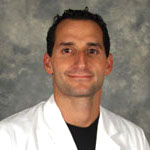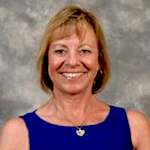Undertaking major emergency department (ED) quality initiatives requires not only transforming processes, but also a dedicated team of physicians and nurses and involved leadership. Can change only be achieved with a long-term effort? Not necessarily — if you a have strong culture.
The power of culture is evident at Kaiser Permanente Moreno Valley Medical Center in Southern California. In today’s post, we’ll look at how our ED achieved dramatic clinical and operational improvements in just a few months.
Moreno Valley Medical Center had many struggles leading up to its purchase eight years ago by Kaiser Permanente (KP). Since that time, the entire hospital had seen tremendous quality improvement.
The ED, however, while under the care of a contracted physician group, remained a challenge. In particular, the site had struggled to recruit emergency medicine physicians (there's quite a bit of competition for hiring in our area) and was in need of significant patient experience, quality, and operational improvements.
Seeking an innovative partner to help them accomplish their goals, the hospital leaders turned to Vituity to staff its ED in 2015. Because Vituity had a strong presence at other hospitals in the community, Kaiser felt the partnership would boost its ability to recruit skilled, board-certified emergency medicine physicians in the area.
Planning for Success
We are fortunate that local KP leadership and Vituity share many similar values regarding provision of patient-centered care, achieving operational excellence, and investing in physician and nursing leadership development. So it was a perfect match.
Three months before the Vituity contract went live, we rolled up our sleeves and began planning for success. This started with meetings among the hospital leadership, the incoming ED Medical Director and Lead Advanced Provider, and Vituity regional leaders.
To help promote success, we also brought in Vituity practice management consultants. These organizational experts are skilled change managers who work with the entire ED team to implement best practices.
With the help of our consultants, we conducted an intensive two-day visit with hospital, ED, and ancillary services leaders at Moreno Valley to develop a comprehensive site assessment. Once we understood the hospital’s challenges, needs, and goals, we held weekly operational team meetings in the months leading up to the contract “go live.”
Vituity physicians and KP nurses worked together and were a critical part of the planning process. The nurses were eager and enthusiastic to help reach our goals. Because many of them had previously worked at other Vituity EDs in the community, they understood our culture and the signature processes we wanted to implement.
Our first order of business was to address the ED’s long wait times. Before Vituity came on board, time to provider was over an hour. Leadership, nurses, providers, and ancillary staff all agreed this was the ED’s most pressing problem, so we built a culture around solving it.
Tackling Improvement as a Team
Day one of the contract arrived, and the team was ready to make process improvement history! During this time, the ED had only 12 beds and was in the midst of a major construction project to add 16 more plus a four-bed fast-track program. So improving throughput to maximize every inch of space in the ED was vital.
With input from the nursing staff, physicians, and ancillary services, we launched Rapid Medical Evaluation® (RME) to address our long wait times and throughput challenges. This signature Vituity process puts a physician in triage with a nurse to perform team intakes. Within just one month, time to provider dropped from 67 minutes to 12, reducing length of stay for our patients by nearly an hour.
The successful implementation of RME marked the beginning of a culture shift at Moreno Valley. By working as a team, everyone saw what we could accomplish in a very short time frame, for ourselves and our patients. Further, the positive workplace we’d created mitigated the morale and staffing issues that had previously plagued the ED.
Because of the trust and confidence we’d built in each other, subsequent operational and quality improvement initiatives became that much easier.
























